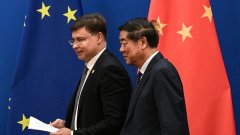The State Administration of Foreign Exchange of China said that the elasticity of the RMB exchange rate in the first half of this year has increased, and its performance is stable globally. In the second half of the year, the RMB exchange rate will continue to maintain basic stability at a reasonable balance.
According to the surging news report, Wang Chunying, deputy director and spokesman of the China State Administration of Foreign Exchange on Friday (July 22), said at a press conference that the Chinese economy is recovering stabilized and the main economic indicators are better.The industrial chain supply chain remains stable, and the economic fundamentals will continue to play the fundamental role of supporting the RMB exchange rate.At the same time, China's foreign trade toughness is relatively strong, and the funds at the real economic level such as trade and investment will still be the basic disk of flowing in, which will help the basic balance of supply and demand for the foreign exchange market.
Wang Chunying also said that the exchange rate of market entities is basically stable, and the market entity still maintains a rational trading model of renewal of foreign exchange and exchange for foreign exchange.In addition, the scale of foreign exchange reserves has maintained stability and continued to ranks first in the world. It still plays the role of stabilizing the important stabilizer and compressor stones in stabilizing national economic and financial security.
She pointed out that the RMB trend will be affected by multiple factors such as foreign exchange supply and demand and the international financial market, and may have a certain fluctuation in the short term.However, she believes that the renminbi will still maintain elasticity and two -way floating, and continue to maintain basic stability at a reasonable balance.
Wang Chunying said that since this year, due to the influence of the Fed's interest rate hikes and geopolitical conflicts, the main line of changes in the international foreign exchange market is that the US dollar has strengthened, and the main non -US currency has weakened.The exchange rate of the RMB to the US dollar has depreciated, but compared with major international currencies, the stability of the RMB value is relatively strong.
As of Thursday (July 21), the US dollar index has risen by more than 11%since this year. The depreciation of the euro, pound and yen against the US dollar is between 10%and 17%, and the RMB depreciated against the US dollar depreciation of the US dollar depreciation5.8%.From the perspective of multilateral exchange rates, the RMB exchange rate index appreciates 0.1%.
Reported that from the perspective of exchange rate expectations, the long -term and option -related indicators of foreign exchange shows that the RMB exchange rate has no significant appreciation and depreciation expectations.Judging from the recent performance, although the US dollar has further strengthened, as the domestic economy has stabilized, the stability of the RMB exchange rate in major currencies around the world has become more prominent.Since July, multilateral exchange rates have risen steadily.
In addition, Wang Chunying also mentioned that based on the relatively stable increase in foreign debt, the optimization of China's foreign debt structure, and the maintenance of China's foreign debt security indicators, the risk of deleveraging of Chinese foreign debt is generally controllable.




